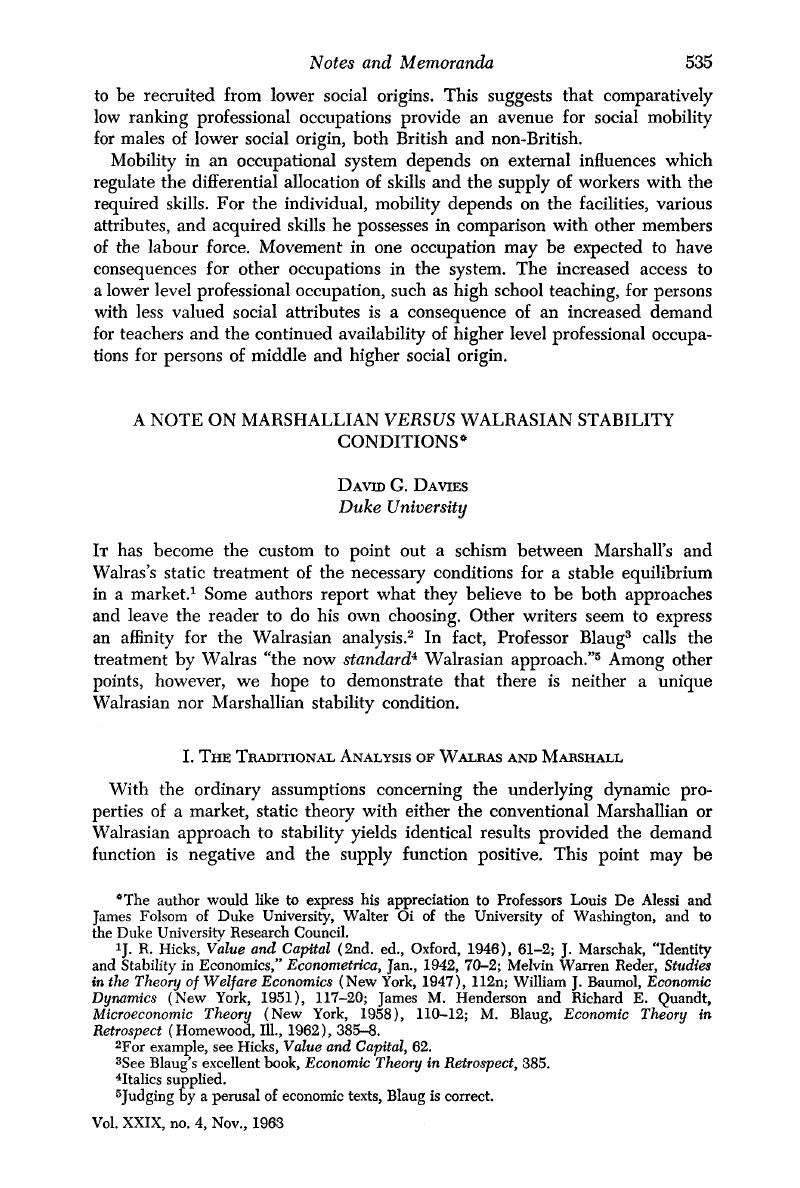Published online by Cambridge University Press: 07 November 2014

The author would like to express his appreciation to Professors Louis De Alessi and James Folsom of Duke University, Walter Oi of the University of Washington, and to the Duke University Research Council.
1 Hicks, J. R., Value and Capital (2nd. ed., Oxford, 1946), 61–2Google Scholar; Marschak, J., “Identity and Stability in Economics,” Econometrica, 01, 1942, 70–2Google Scholar; Reder, Melvin Warren, Studies in the Theory of Welfare Economics (New York, 1947), 112nGoogle Scholar; Baumol, William J., Economic Dynamics (New York, 1951), 117–20Google Scholar; Henderson, James M. and Quandt, Richard E., Microeconomic Theory (New York, 1958), 110–12Google Scholar; Blaug, M., Economic Theory in Retrospect (Homewood, Ill., 1962), 385–8.Google Scholar
2 For example, see Hicks, , Value and Capital, 62.Google Scholar
3 See Blaug's, excellent book, Economic Theory in Retrospect, 385.Google Scholar
4 Italics supplied.
5 Judging by a perusal of economic texts, Blaug is correct.
6 See Marschak, , “Identity and Stability,” 70–1.Google Scholar Marschak identifies the price adjuster model with Walras and the output adjuster model with Marshall. As I show later in this paper, such an identification is not entirely correct.
7 Baumol, , Economic Dynamics, 119 Google Scholar; Blaug, , Economic Theory in Retrospect, 338 Google Scholar; Henderson, and Quandt, , Microeconomic Theory, 113.Google Scholar
8 “Identity and Stability,” 70–1.
9 Walras, Leon, Elements of Pure Economics, translated by Jaffe, William (London, 1954), 86–105.Google Scholar
10 Ibid., 502 and 504.
11 Hicks, , Value and Capital, 61 Google Scholar, and Samuelson, Paul, “The Stability of Equilibrium: Comparative Statics and Dynamics,” Econometrica, 04, 1941, 103n.Google Scholar
12 “Stability of Equilibrium,” 103n.
13 (London, 1930); see inserts after p. 28.
14 Walras, , Elements of Pure Economics, 504.Google Scholar
15 Marshall, , Pure Theory of Foreign Trade, 11–12, and 18 ff.Google Scholar Cf. Marshall, Alfred, The Pure Theory of Domestic Values (London, 1930), 10–13.Google Scholar
16 Principles of Economics (8th ed., London, 1950), 332–3.Google Scholar
17 Elements of Pure Economics, 224–5.
18 WhiIe Professors Hicks and Samuelson apparently agree that Marshall had a conventional Walrasian type system in the Pure Theory of Foreign Trade, Hicks claims that Marshall's traditional approach is “nearer the stability condition appropriate to conditions of monopoly” while Walras's normal treatment is compatible with competition. This statement is, I believe, cloudy for two reasons: (1) we have seen that we cannot identify Walras with only a price adjuster model, and (2) it is quite possible that a price adjuster model could be compatible with monopoly or oligopoly while an output adjuster model could be just as compatible with competition. See Hicks, , Value and Capital, 62nGoogle Scholar, and Marschak, , “Identity and Stability,” 71n.Google Scholar
19 It is interesting to note that some economic texts contain detailed description of the conventional Walrasian analysis and never mention the traditional Marshallian or unconventional Walrasian analysis of stability. The procedure becomes paradoxical when the textbook authors or instructors later analyse the effect of an output tax in a decreasing cost partial equilibrium setting which is a typically Marshallian problem. It seems clear that unwary students need no longer fall victim to an apparently perfidious analysis, for the traditional Walrasian treatment is useful for one set of problems, while the traditional Marshallian analysis is useful for a quite different set of problems.